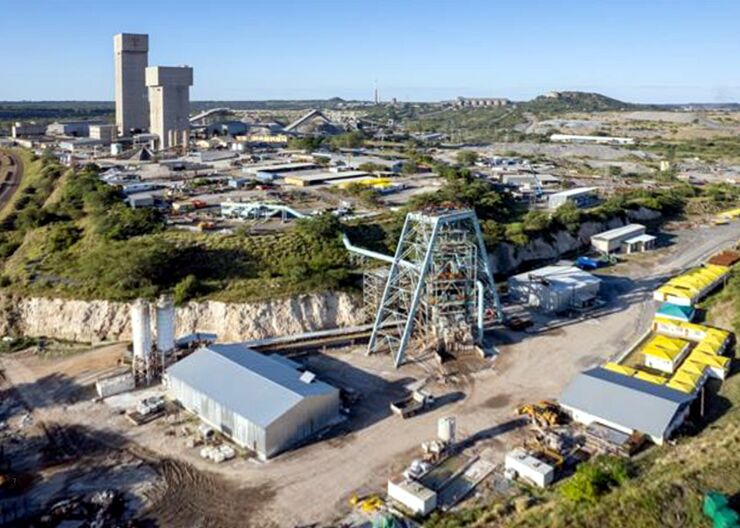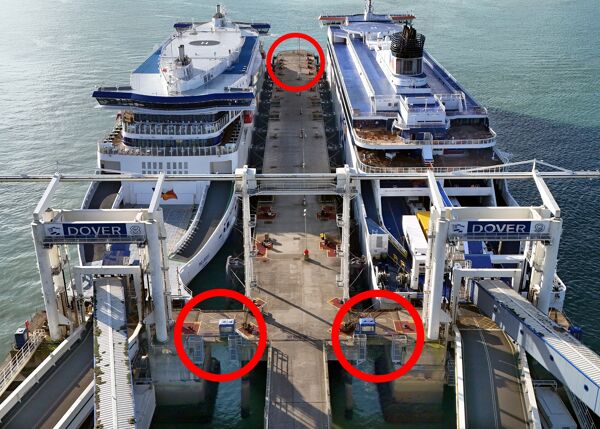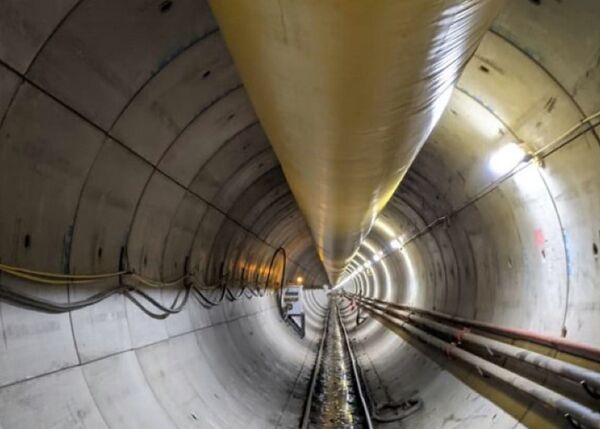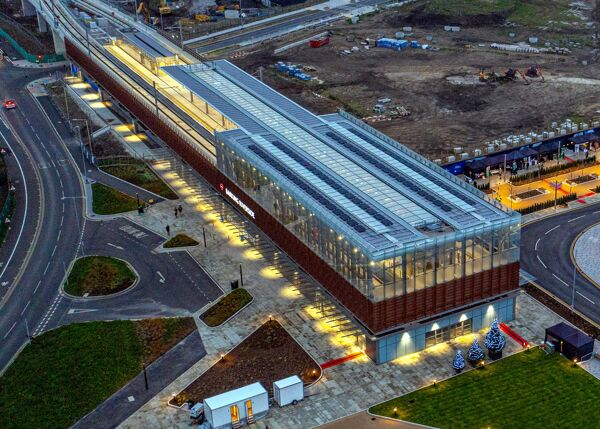
The NEC4 Alliance Contract (ALC) is being used for a US$700 million (£550 million) scheme to deepen a major copper mine in South Africa. The challenging project to reach a further copper ore body 2 km below the surface started in February 2013, the ALC started in 2021 and work is due for completion in July 2026.
Client Palabora Mining Company initially built twin decline tunnels below the ‘Lift 1’ ore body to reach the ‘Lift 2’ ore body below using a bespoke contract. Now, together with its alliance partners UMM Contracting and Lion One Contracting, it is progressing the horizontal undercut and extraction levels for the block-cave-mining process as well as the ‘draw bells’ which funnel the fractured ore from the undercut level to the extraction level. One of two main crushers is complete (the biggest of its kind and the deepest in the world) and progress on the workshops, pumps, conveyors and ventilation level continues.
Once operational, the extended mine and its associated smelter and refinery, the only producer of refined copper in South Africa, will operate for two more decades, providing ongoing employment for up to 5,000 people. The alliance was highly commended for the 2024 NEC Martin Barnes Award for Leading the Future through Best Practice and Collaboration.
Specialist mining partner
Berto de Gouveia of contracts manager and supervisor Zutari (Pty) Ltd says the client and project leaders understood early on that the key challenge was to secure a specialist mining partner. ‘It was vital to bring deep-level block-cave-mining expertise on board to carry out this mining development successfully and safely.’
He says NEC4 ALC was discussed as a procurement strategy from the outset. ‘The client and leaders must be commended for their vision given that this form of collaborative alliancing contract was considered risky and untested in the South African mining environment.’
de Gouveia says one of the factors that has made the contract successful is the maturity of the client and its partners. ‘The development of a trusting relationship, being transparent and the promotion of open communication by the leaders of the alliance is an example to all.’
Atmosphere of trust
He says the role of the alliance board and alliance manager was a new experience for the project team. ‘It was innovative not only in process but in the way the mindsets had to change. Once the idea of “we actually work together” to tackle and resolve changes or unexpected events has sunk in, it created an atmosphere of trust and positive attitude, and this filtered through the team down to the operators at the work face.’
de Gouveia says engagement of the team in this manner created a culture that was measurably different on the project. ‘This was achieved with constant communication and open discussions and engagement from the alliance manager to the team members at all levels.’
He says there was also a focused effort to align and train new team members to the way an alliance works. ‘The buy in was not always a given and some team members remained sceptical. The leaders recognised this early on and ensured that training remained a key focus as the risk in a large team of misalignment was a risk to all.’
Teamwork and targets
de Gouveia says teamwork between the client and partners is essential. ‘We have developed a culture of “one team making the best decisions for the project” as well as an early learning that on occasion difficult decisions have to be accepted from time to time.’
He says the contract is structured such that mining equipment and certain material is made available for free use to the alliance team. ‘As such the alliance team has to work with the mine’s procurement, finance and stores management to ensure on-time despatch of this equipment and material.
de Gouveia says that NEC-inspired teamwork is therefore not only between members of the alliance but also with the mine’s operational team to keep the alliance on track from a time and target development perspective. ‘Performance is primarily measured based on the mining development target but the NEC4 ALC also allows for quarterly adjustment of targets in the performance table to meet the mine’s annual business plan.’
He says the adjustment of targets on such a basis requires transparency and clear communication. ‘The reality is that this realignment of project objectives is not always a straightforward agreement and decisions on occasion can take longer.’
Results
 de Gouveia says the Lift 2 project has shown that the alliance model of contracting requires serious consideration as a form of contract for complex mining projects with a long duration. ‘In a global environment where inflationary pressures, skill shortages and a lack of experienced contractors in the mining sector, particularly in South Africa, alliancing could provide for growth of skills and better outcomes on these types of contracts. On complex long-term projects, the most important objective of the client is to secure the most authentic contractor or partner. The way to achieve this is by being transparent, mature and securing trust.’
de Gouveia says the Lift 2 project has shown that the alliance model of contracting requires serious consideration as a form of contract for complex mining projects with a long duration. ‘In a global environment where inflationary pressures, skill shortages and a lack of experienced contractors in the mining sector, particularly in South Africa, alliancing could provide for growth of skills and better outcomes on these types of contracts. On complex long-term projects, the most important objective of the client is to secure the most authentic contractor or partner. The way to achieve this is by being transparent, mature and securing trust.’
He says from the NEC4 ALC experience, the project team has taken the strategy into execution of other packages where the client formed an ‘owner’s construction team’ using alliancing principles derived from the Lift 2 project. ‘This was done where conventional contracting resulted in termination and failure. The concept of collaboration and incentives and disincentives has been taken onboard and implemented in other critical packages of the project.’
de Gouveia says the existing partners have had a positive experience and although some were not trusting of the process initially, most have a different view now. ‘This will influence their approach in major works where clients are open to a more modern and collaborative form of executing contracts.’
He says his firm is taking the Lift 2 NEC4 ALC as a case study to other clients and stakeholders to explain its challenges and successes in delivering better project outcomes. ‘In conclusion alliancing brings an element of the spirt of “Ubuntu”, which is an ancient African word described as “I am because of who we all are”.’
Benefits of using NEC
- NEC4 ALC enabled the client to partner with a deep-level block-cave-mining specialist on this challenging project.
- The alliance board ensures there is a true collaborative strategy across the whole project, creating value and trust.
- NEC4 ALC promotes trusting relationships, transparency and open communication between leaders of the alliance, which permeates the whole project team.



